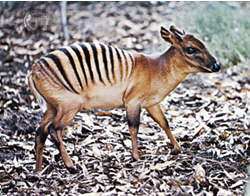News
Latest Lion Aid News
Oxford scientists publish data on factors that influence trophy hunter preferences
Sunday 10th October 2010
|
Recently, four scientists at the Wildlife Conservation Research Unit, Recanati-Kaplan Centre, published a paper with the title “Size, rarity, and charisma: valuing African wildlife trophies”, but there were some weaknesses in the data and their conclusions. These scientists reported several trends: 1. Among bovids (a very diverse group of herbivorous species in Africa, including eland, buffalo, impala, wildebeest, kudu, etc, etc – the smallest weighs in at about 2kg and the largest at over 900kg) – size matters in terms of the price a hunter is willing to pay. Same with the felids (the cat species – ranging from the little black-footed cats and African wild cats to the enormous lions). But hunters sniffed at shooting a hyena – not very charismatic… Nothing very surprising so far, but we are concerned about both the quality of the data on which the paper is based, the lack of recommendations (apart from that countries where such species occur should assess status and charge higher fees), and an underlying thread (most likely not intended by the authors, but apparent), that “rarity” engenders desirability in the absence of any other means of control except finance. We have the following objections to the publication:
Second, there is a huge difference in the “quality” of the operators involved in providing the hunts. The prices they charge for a hunting safari will differ accordingly, and all the authors did was come up with an “average” price per country. New operators will cut corners to charge less, as they are possibly located in areas with less trophy animal potential. A diversity of price structures cannot just be averaged. Third, many operators will make deals with the clients. Come hunt a lion with us (expensive), and we will throw in an impala and a kudu and a warthog for free. I know of few hunters who would specifically journey to Tanzania to shoot a jackal? So it is difficult to factor in the actual economic value of those “less charismatic” species as the hunter does not actually pay for them. Fourth, the authors admit that trophy hunting itself is contributing to the rarity of the species. But then they say that increased rarity will fuel higher demand, and thus that higher prices will be paid by those wanting to collect another lion from a decreasing population. That is a supposition based on the absence of regulatory agencies. If the IUCN and CITES were to put lions on their various endangered lists, hunting would be severely curtailed no matter what anyone would be willing to pay. There is a bit of a dangerous thread flowing through the article in my opinion - the more “rare” a species is declared, the more people will be eager to hunt it, so therefore don’t change the conservation status? Fifth, lets say that because of the “rarity”, “charismatic” and “danger” value of a certain species, the prices go up. So instead of $30,000 in Zimbabwe, you now have to pay $60,000. Where does the extra money go? The cost of the safari in terms of what the operator provides remains largely the same. Do extra funds go to the government for an added trophy fee? That is a reward for allowing a species to become rare in the first place. To the community associated with the hunting concession? Communities have been paid a pittance and this is not likely to change. To the operator? Again, a reward for assisting the species into an increased level of rarity. To conservation programmes to attempt to reverse the decline of the species under the gun? If that is not a component of the current fees, you can be sure it will not be a component of the higher fees. Also, while the article points out that increasing rarity will lead to higher prices (very simple economics), it does not necessarily follow that there will therefore be an increasing demand. Higher prices could actually lead to a lessening demand as potential clients are simply priced out of what they can afford. Or maybe they could be prevented by legislation to continue hunting increasingly rare species. Or, since we are now in 2010, perhaps persuaded that further offtake is no longer ethical? What LionAid would recommend is that once a species becomes rare, no amount of money should convince source countries to allow further hunting. No matter the rarity, danger, or charismatic value, just stop the hunting offtake that has contributed to the decline in the first place. An increasingly rare species cannot continue to be sustainably hunted. We will continue these thoughts in another blog…. Stay tuned! Picture: Zebra duiker Categories: Trophy Hunting |
Posted by Pieter Kat at 15:48
No comments have been posted yet.
Add a new comment
Existing user
New user sign up




